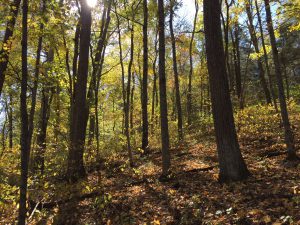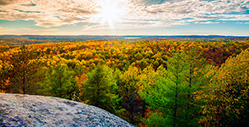Historic Mill Hole Farm
Historic Mill Hole Farm
Sale
 The Sebaugh family purchased this farm in 1982 and moved their family here from Alaska. Initially a cattle farm, the Sebaugh’s soon realized the vast timber resource on the farm could be further enhanced by taking an active role in its management. That has paid big dividends as they have had at least six timber sales and still have over 1,000.000 board feet or marketable timber present. In addition, they have planted 28 acres to walnut, oak and pine trees and performed timber stand improvement projects after each timber sale. The plantation is part of a $5,300 per year payment under the CREPP Program.
The Sebaugh family purchased this farm in 1982 and moved their family here from Alaska. Initially a cattle farm, the Sebaugh’s soon realized the vast timber resource on the farm could be further enhanced by taking an active role in its management. That has paid big dividends as they have had at least six timber sales and still have over 1,000.000 board feet or marketable timber present. In addition, they have planted 28 acres to walnut, oak and pine trees and performed timber stand improvement projects after each timber sale. The plantation is part of a $5,300 per year payment under the CREPP Program.
Reluctantly, the time has come where they want to give someone else the opportunity to carry the baton of stewardship and to enjoy what they have enjoyed for 35 years.
STEEPED IN HISTORY
The mill hole was strategically important for settlers as it provided something that was scarce in this area….water. The mill hole located on this farm is the result of a collaspe in an underground stream that allow us to see it. We call it a karst window, a view into a cave for a brief moment. The mill hole is 1200’ feet long, 800’ feet wide and 130’ deep. The stream exposes itself from one end of the window and flows to the other end where it disappears under ground again. The stream is fed by 17 sinking streams in the area. During heavy rains, the water in the hole can rise as much as 70’. The water passing through this window is said to flow and empty into the green river at turnhole bend.
The name “mill hole” is said to have come from its past use as a place to have grains milled by water power. Its been told that a floating grist mill was tethered and would rise and fall as the water level changed. The waters current was used to power the mill. Local Indians of the time would have found this area to be very important to them.
The Land and Timber
The mill hole lies on the edge of the sink hole plain escarpment near Park City Kentucky. The sink hole plain is characterized by gently sloping limestone ground with scattered sink holes where all rainwater enters the ground. The escarpment is the limestone hillsides that are “capped” by an impermeable layer of sandstone that keep water from entering the ground. Limestone is slowly eroded over time because as rain falls, it picks up a small amount of carbon dioxide (like the fizz of a bottle of soda) that dissolves the rock. This combination of limestone and sandstone makes for productive forest soils. The farm contains approximately 350 wooded acres (272 marketable), 52 acres of pasture, 28 acres of tree plantation and 16 acres of miscellaneous open ground. A timber inventory of 2017 shows the farm contains an estimated 1,064,000 board feet of marketable timber with an estimate market value of $345,000.00. The primary species are red oak, yellow poplar and white oak.
SUMMARY OF MARKETABLE TIMBER
SPECIES VOLUME
Misc. Red Oak 330,000
Yellow Poplar 159,000
White Oak 149,000
Hickory 105,000
Hard Maple 56,000
Ash 53,000
Black Walnut 50,000
Sycamore 35,000
Redcedar 30,000
Chinkapin Oak 27,000
Blackgum 19,000
Soft Maple 17,000
Post Oak 10,000
Scarlet Oak 8,000
Black Cherry 3,000
Beech 1,000
Misc. Hardwoods 12,000
_______________________________________________________
Total All: 1,064,000
The Home:
Sitting in a scenic overlook of the farm is a three bedroom, 2.5 bath home built in 1977. The master bedroom is located on the second floor and the home has had recent upgrades tot he kitchen and dining area. Three sources of hear are available; a heat pump, gas logs and an outdoor Hardy Stove. The home is on city water and has a septic system. As a bonus, an in ground pool adds to the enjoyment of the home.
Historic Home:
The farm contains one of the first homes built in the county and is currently on the national register of historic places. The home is estimated to have been built between 1790 and 1810 and currently sits next to the existing home on the farm overlooking the beautiful valley below.
Call me for a tour of the farm.
Kraig
- Property Type: Land
- Price: $1495000
- Land area: 446
- Bedroom: 3
- Bathroom: 2.5
- Furnishing: Unfurnished
- Tenure: Not Applicable





























